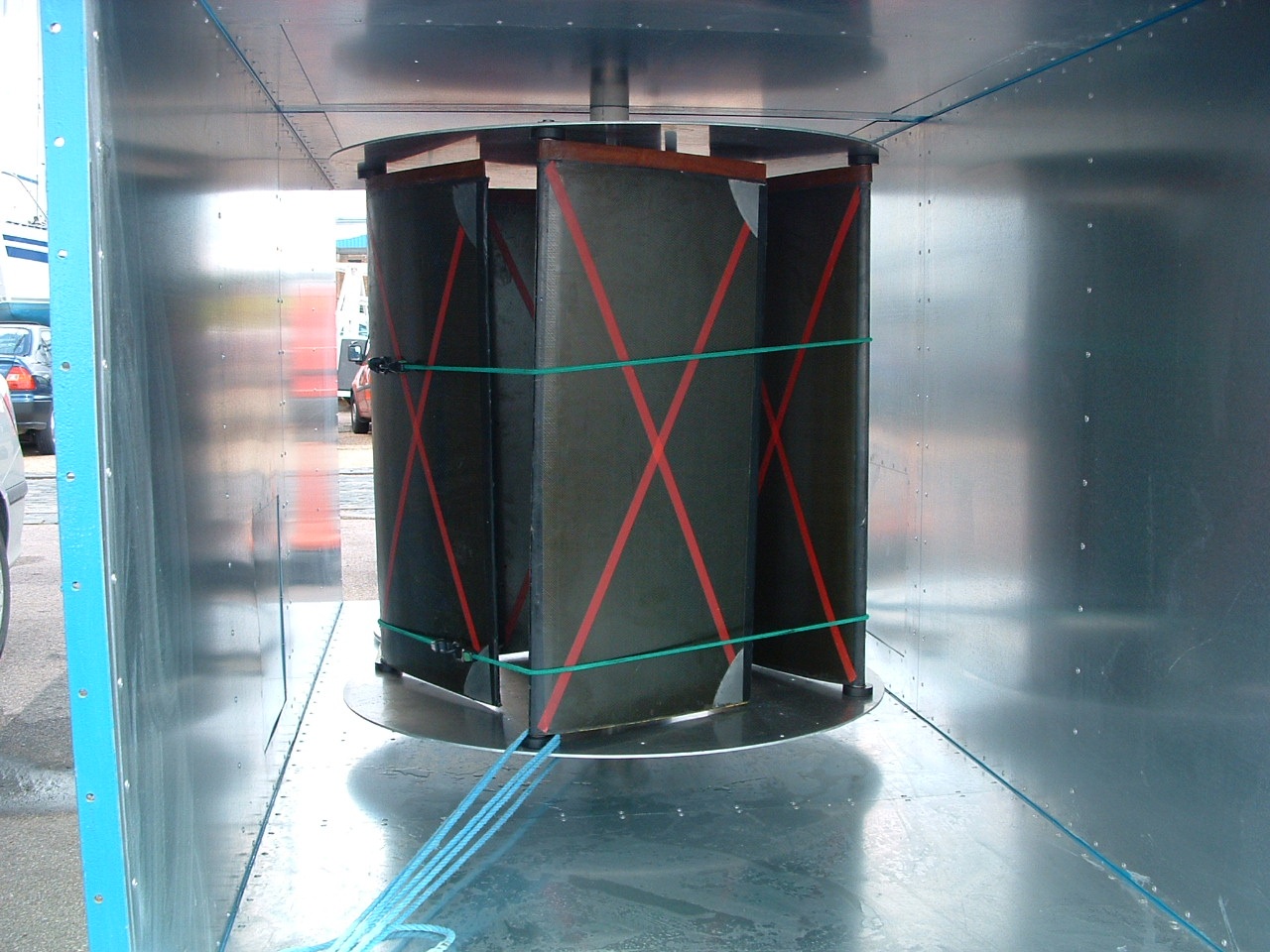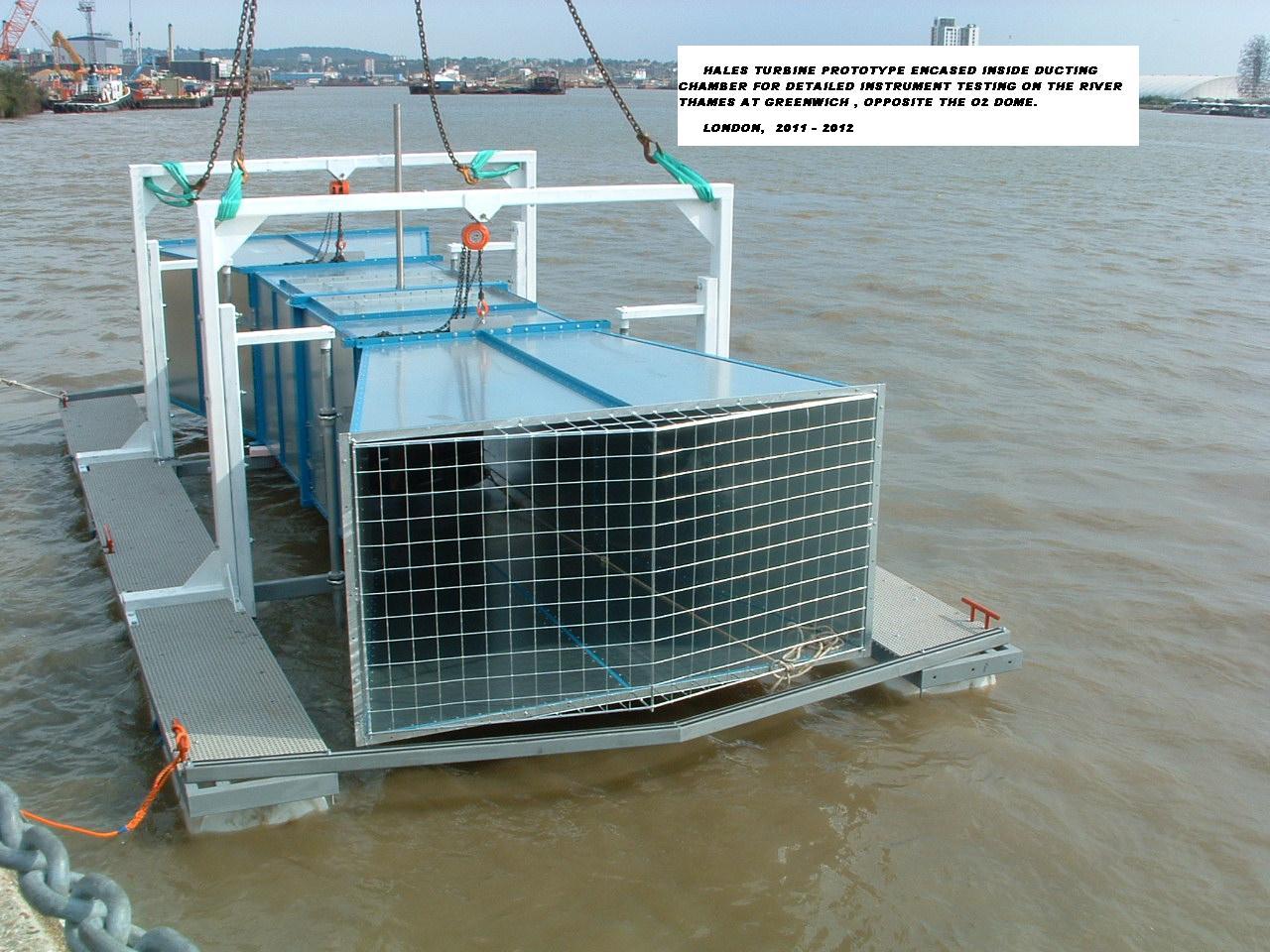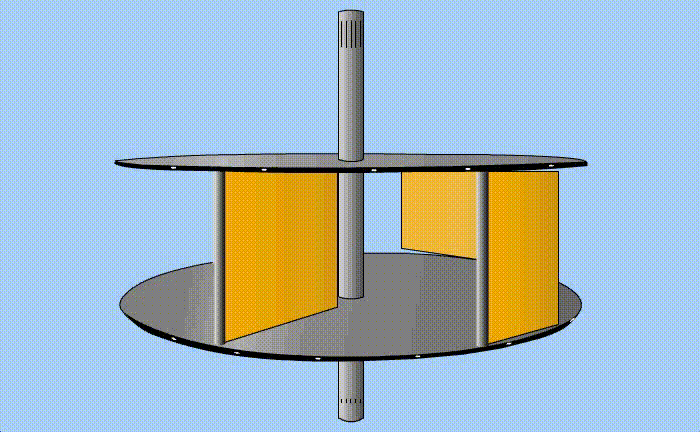How The Hales Turbine Works
Waterwheels, seen in most countries around the world have a simple wheel supported on a horizontal shaft, on the outside of the wheel are blades which feel the force of a water flow, either directed or flowing beneath and the water pushes the blades around.
Good on land, not so good in harsh marine environments or the many run off river sites without a suitable head of water, however using modern engineering and materials it is possible to take this effective early turbine and by turning the output shaft to the vertical to immerse the whole turbine into the tidal flow. To overcome the high resistance on the wheel blades that on one side are trying to move back against the water flow, they are shaped and hinged to present a minimum resistance. (The animation on the home page shows this action). The large blade area on the drive side produces very high amounts of torque (rotational force) at low speed, in the range of 10 to 16 RPM.
This Hales Turbine design coupled with the modern permanent magnet generators that can start producing electricity rotations as low as 2 RPM offer the possibility of tidal generation world wide.



